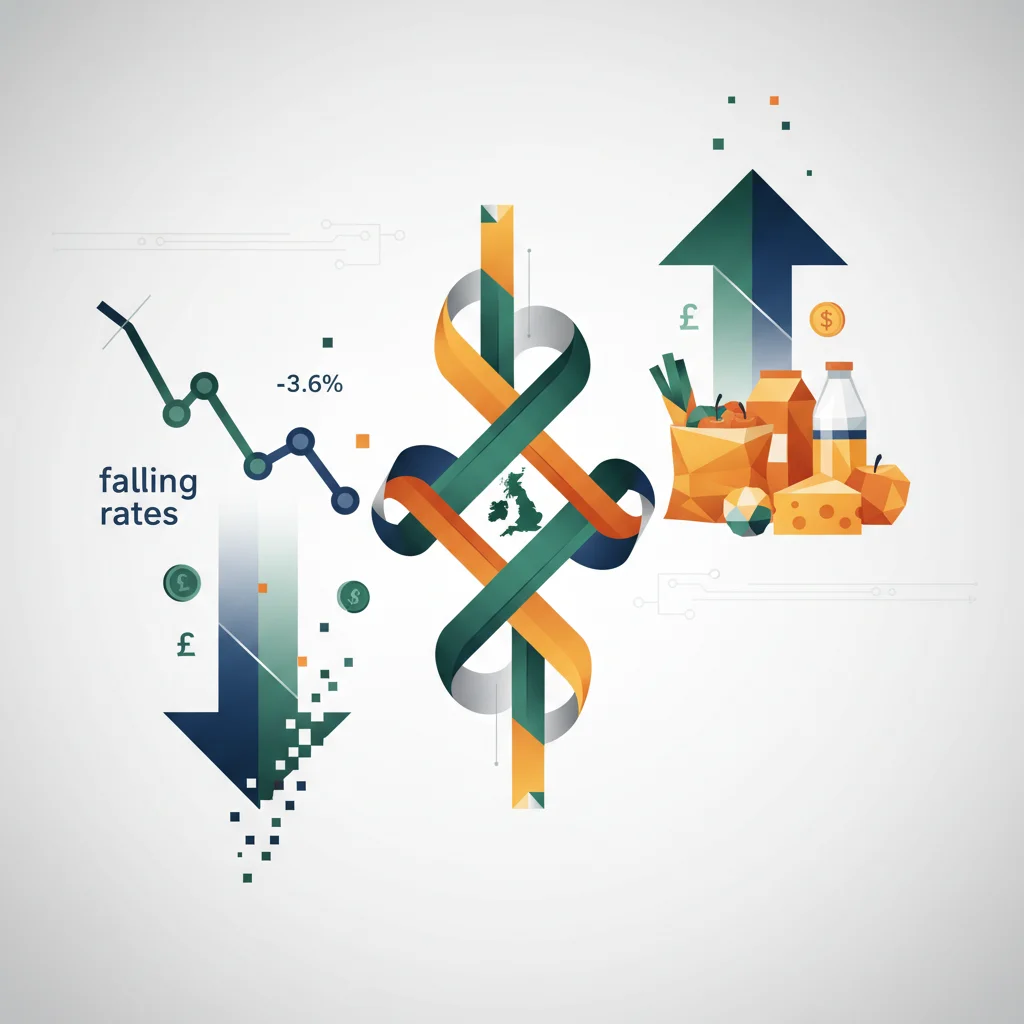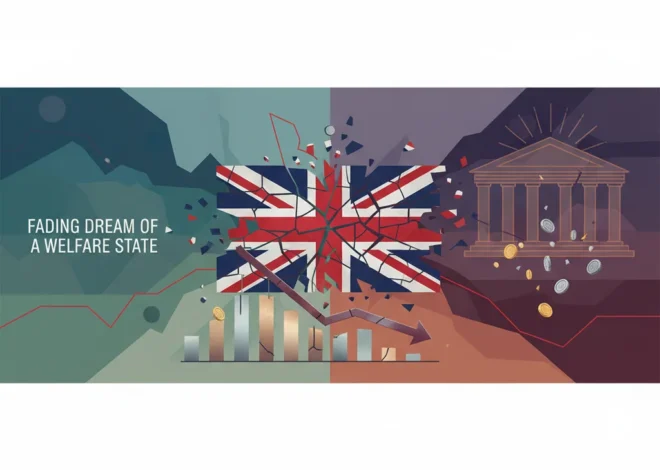
The UK’s Inflation Paradox: Why Falling Rates Don’t Mean Cheaper Groceries
In the world of economics and finance, headline figures often tell only half the story. The latest data reveals that UK inflation, as measured by the Consumer Prices Index (CPI), has fallen to 3.6% in the twelve months to October. On the surface, this is a welcome sign—a signal that the relentless price pressures that have squeezed households and businesses may finally be easing. It suggests the Bank of England’s aggressive monetary tightening is taking effect and that the national economy is on a path toward stabilization.
However, a collective sigh of relief would be premature. While the overall rate of price increases has slowed, a crucial component of daily life continues to defy the trend: food prices. As reported by the BBC, the cost of the weekly grocery shop remains a significant pain point for millions. This creates a confusing and frustrating paradox for the general public and a complex puzzle for investors and policymakers. Are we winning the war on inflation, or is the battle simply shifting to a new front?
This article delves beyond the headline 3.6% figure to explore the nuances of the UK’s current economic climate. We will analyze the drivers behind the overall inflation drop, investigate why food prices remain stubbornly high, and discuss the profound implications for personal finance, the UK stock market, and future investment strategies.
Dissecting the Headline: What’s Driving the Drop?
A drop in the headline inflation rate is a significant macroeconomic event. The primary driver for this recent cooling has been the energy sector. Global energy prices, which skyrocketed in the previous year, have since stabilized and, in some cases, fallen. This has had a disinflationary effect, meaning prices are still rising, but at a much slower pace than before. This is largely due to the “base effect,” where the current, more moderate price increases are being compared to the massive spikes seen a year ago.
According to the Office for National Statistics (ONS), transport and motor fuel costs have also contributed to the slowdown. This provides some relief for commuters and the logistics industry, which are critical components of the UK economy. However, it’s crucial to understand that “disinflation” is not “deflation.” Prices are not falling; they are just climbing the hill less steeply. The cumulative impact of the past two years of high inflation means that the cost of living is substantially higher than it was, and this new, lower rate of increase is being added on top of that elevated base.
The Great Legal Shake-Up: Is Private Equity About to Buy into Big Law?
The Persistent Problem: Why Your Food Bill is Still Soaring
While the broader inflation picture improves, the situation in the supermarket aisles tells a different tale. Food and non-alcoholic beverage prices have continued to post double-digit annual increases in some areas, a reality that directly impacts every household’s budget. Several complex factors are at play:
- Supply Chain Disruptions: Lingering effects from Brexit, global conflicts, and adverse weather events in key agricultural regions have continued to disrupt supply chains, increasing the cost of production and transportation.
- Labour Costs: A tight labour market has driven up wages in the agriculture, food processing, and retail sectors. While good for workers, these costs are inevitably passed on to consumers.
- Energy in Production: Although consumer energy prices have cooled, the energy-intensive nature of food production—from farm machinery to refrigeration—means that high energy costs are still baked into the price of goods on the shelf.
To illustrate the disparity, let’s examine a hypothetical breakdown of the components contributing to the overall CPI figure. This highlights how a single headline number can mask significant variations across different sectors.
| Category | Inflation Rate Contribution | Commentary |
|---|---|---|
| Food & Non-Alcoholic Beverages | +10.1% | Remains exceptionally high, driving the cost of living crisis. |
| Energy, Gas & Electricity | -5.2% | A strong disinflationary force due to falling wholesale prices. |
| Transport & Fuel | +1.5% | Slowing significantly compared to the previous year. |
| Housing & Household Services | +4.5% | Still elevated due to rising rents and mortgage costs. |
| Overall CPI (Headline) | +3.6% | The average, pulled down by energy but kept up by food. |
Implications for the Bank of England and the Broader Economy
This mixed inflation data puts the Bank of England (BoE) in a challenging position. The fall in headline CPI might reduce the pressure for further interest rate hikes, which would be welcome news for mortgage holders and businesses seeking loans. However, the persistence of high food and services inflation—key indicators of domestic price pressures—will prevent them from cutting rates anytime soon. The BoE’s Monetary Policy Committee will be watching wage growth and services data like a hawk before signalling any pivot.
For the UK economy at large, this environment is one of stagnation. High borrowing costs are designed to cool demand, but they also stifle investment and growth. Businesses, particularly in the hospitality and retail sectors, are caught between rising input costs (especially food) and a consumer base with diminished purchasing power. This delicate balance makes the risk of a mild recession a constant threat throughout the coming quarters.
Navigating the Markets: What This Means for Your Investments
For those engaged in investing and trading, this nuanced economic landscape requires a sophisticated approach. The market’s initial reaction to lower headline inflation is often positive, as it suggests the end of a rate-hiking cycle. However, savvy investors will look deeper.
- Stock Market Sectors: Companies in the consumer staples sector (e.g., supermarkets) may face margin pressure as they try to balance absorbing rising food costs with keeping prices competitive. Conversely, consumer discretionary sectors (e.g., travel, luxury goods) might see a lift if investors believe the worst of the inflationary pressure is over, freeing up household income.
- Bonds: Government bonds (gilts) typically rally on news of falling inflation, as their fixed payments become more attractive. The prospect of the BoE pausing rate hikes further supports bond prices. According to Bank of England analysis, monetary policy expectations are a key driver of gilt yields.
- Equities: The overall outlook for the stock market, such as the FTSE 100, will depend on whether the economy can achieve a “soft landing”—where inflation falls without causing a major recession. If recession risks rise, defensive stocks (utilities, healthcare) may outperform more cyclical growth stocks.
The Role of Fintech and Modern Banking
In this challenging environment, the evolution of financial technology offers powerful tools for both individuals and investors. The modern banking and fintech sectors are stepping in to help people navigate economic uncertainty.
Budgeting apps and AI-driven financial assistants can help consumers track their spending with granular detail, identifying where rising costs like food are having the biggest impact. For investors, low-cost digital trading platforms provide access to a wide range of assets, allowing for portfolio diversification to hedge against inflation. Some high-risk investors even look to alternative assets; the theory behind using blockchain-based assets like Bitcoin as an inflation hedge is rooted in its fixed supply, though its extreme volatility makes it a speculative choice rather than a reliable store of value for most. This shift towards digital self-management in personal finance is a defining trend of our time, accelerated by economic pressures (source).
Conclusion: A Cautious Optimism
The fall in UK inflation to 3.6% is undeniably a step in the right direction. It marks progress in a long and arduous fight against runaway prices. However, it is not the end of the story. The persistent sting of high food prices serves as a stark reminder that the economic pressures on households remain intense.
For investors, business leaders, and the public, the key takeaway is the importance of looking beyond the headlines. The UK economy is navigating a complex transition period where different sectors are moving at different speeds. While the storm of peak inflation may have passed, the waters remain choppy. Vigilance, strategic financial planning, and a deep understanding of the underlying economic currents will be essential to successfully navigate the months ahead.


